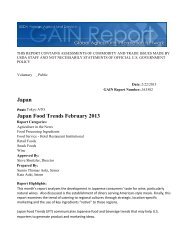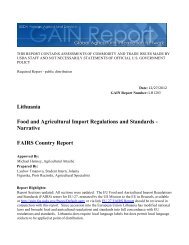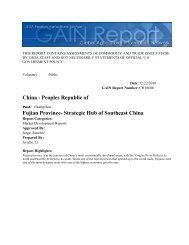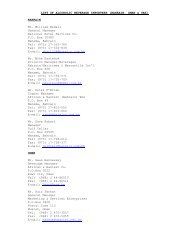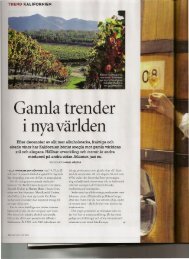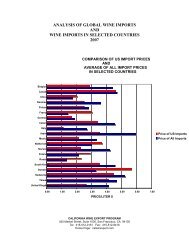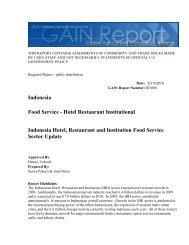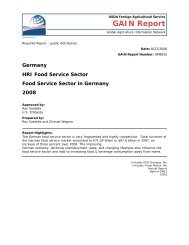Brazil Wine Market Report JBC EMP July 2011 - California Wine ...
Brazil Wine Market Report JBC EMP July 2011 - California Wine ...
Brazil Wine Market Report JBC EMP July 2011 - California Wine ...
You also want an ePaper? Increase the reach of your titles
YUMPU automatically turns print PDFs into web optimized ePapers that Google loves.
24<br />
<strong>Brazil</strong>ian <strong>Wine</strong> <strong>Market</strong> <strong>Report</strong><br />
The following is a list of exporter documents necessary to import a standardized cargo of<br />
goods into <strong>Brazil</strong>, taken from both the World Bank’s report Doing Business in <strong>Brazil</strong> <strong>2011</strong> and<br />
USDA’s Sao Paulo Agricultural Trade Office <strong>Wine</strong> <strong>Market</strong> Access Project:<br />
• Copy of Bill of lading<br />
• Certificate of analysis and certificate of Origin<br />
• Aging certificate (if necessary)<br />
• Cargo release order<br />
• Commercial invoice<br />
• Customs Import Declaration<br />
• Foreign Exchange Authorization<br />
• Packing list<br />
• Technical Standard/ Health Certificate<br />
Product Certificates 11<br />
All wines exported to <strong>Brazil</strong> must be accompanied by a certificate of origin and a certificate of<br />
analysis. A Letter of Free Sale from TTB substitutes for the certificate of origin. Since the<br />
regulations define wine as 14 percent or less, for any wine above 14 percent alcohol a<br />
Certificate of Typicity is required. The certificate is to clarify that the higher alcohol content<br />
is because of the wine appellation’s soil and climate conditions. In recent regulations, MAPA<br />
requires exporting countries to provide a formal list of government accredited entities eligible<br />
to issue certificates of origin and analysis. Certificates from Chambers of Commerce are no<br />
longer eligible sources. MAPA provides models of the forms presented in Normative<br />
Instruction no. 54/2009, ANNEX VIII (see Appendix II). Both certificates must be signed and<br />
stamped upon importation. A list of eligible entities is made available on MAPA’s web site<br />
(https://www.agricultura.gov.br/).<br />
Labeling Requirements<br />
The following information is required by <strong>Brazil</strong>ian law to be placed on labels of alcohol<br />
beverages. For a product whose label is not in the Portuguese language, an adhesive sticker<br />
can be placed on the original label containing all the required information:<br />
• Brand name of product<br />
• Type of product<br />
• Net contents (in metric units)<br />
• Importer’s name, address and corporate ID number<br />
• Producer or Manufacturer’s name and address<br />
• MAPA Registration number of importer<br />
• Country of origin<br />
• Alcohol content (% alc. by volume)<br />
• List of ingredients<br />
• Lot identification code<br />
• Storage care<br />
11 See Appendix I for Regulations Concerning Oenological Practices



